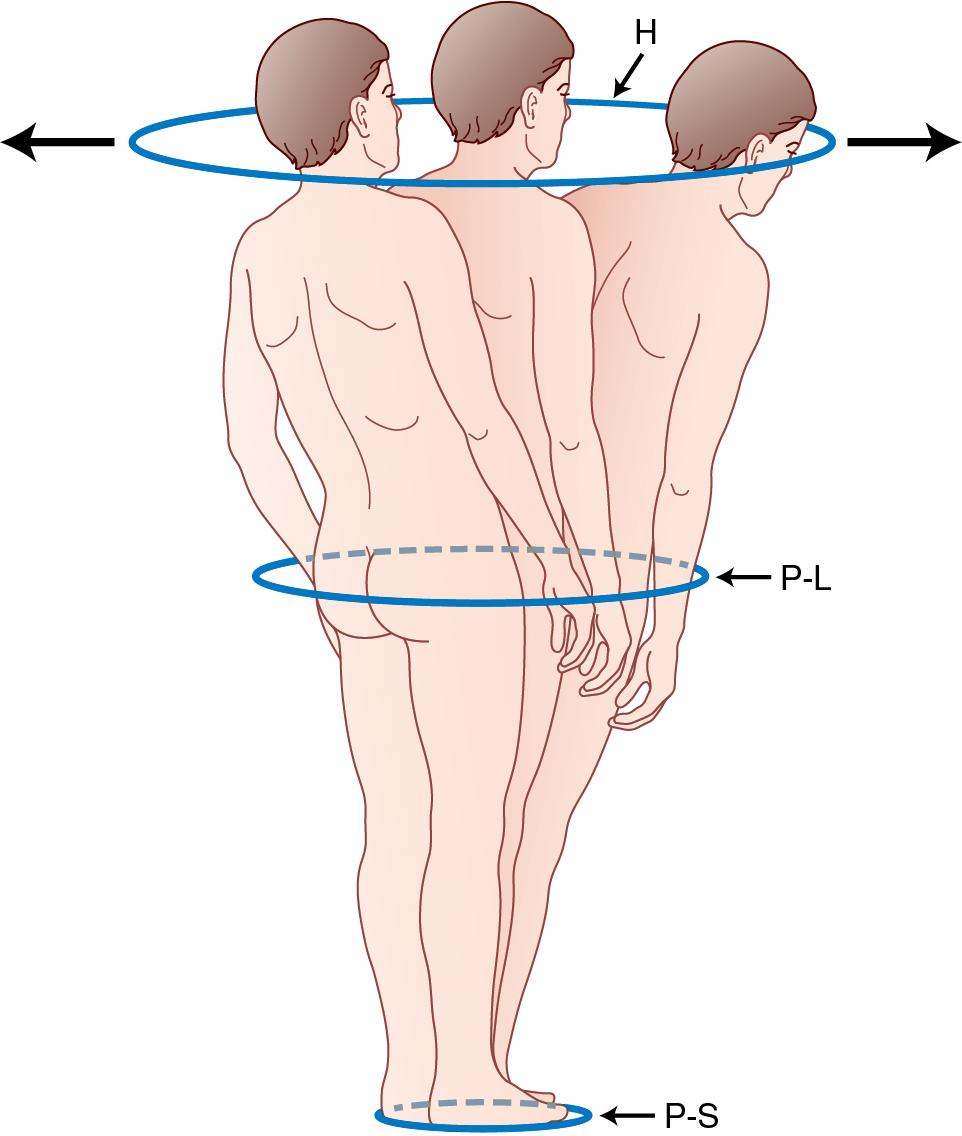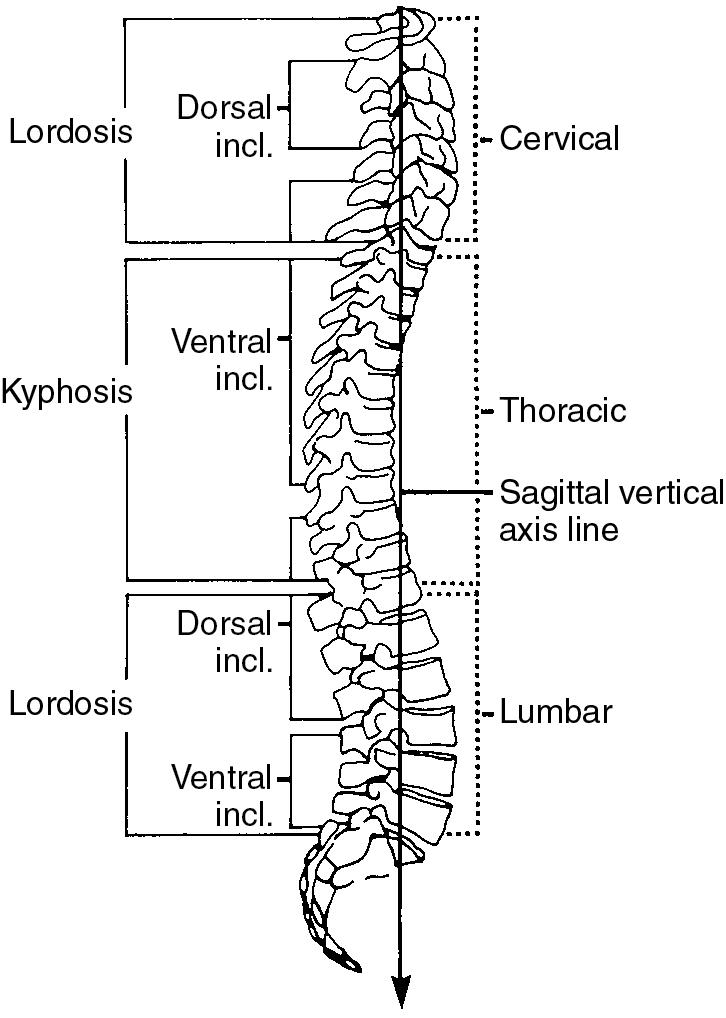Physical Address
304 North Cardinal St.
Dorchester Center, MA 02124
The concept of the “cone of economy” was introduced by Dr. Jean Dubousset and describes a cone-shaped region extending from the feet upward around the trunk. When the body’s center of gravity is maintained within this region, energy expenditure is minimized. Deviation outside this cone increases the energy expenditure required to maintain an erect posture. Sagittal balance of the spine is dependent on the relationship of the four curves of the spine, as well as the position of the sacrum and pelvis, which serve as an intercalary “pelvic vertebra” between the trunk and lower extremities. A balanced spine is able to maintain the standing position and horizontal gaze with minimal muscular effort. Spinal balance is an active process that reflects the harmony between posture and motion and is imperfectly represented by static radiographs alone. In contrast, spinal alignment is a radiographic concept, evaluated on static standing radiographs, and serves as the basis for the preoperative and postoperative assessment of posture in patients with spinal deformity ( Fig. 52.1 ).

The sagittal alignment of the spine may be described on a segmental level (i.e., alignment between adjacent vertebrae), regional level (i.e., cervical, thoracic, lumbar, sacral alignment), and global level (i.e., alignment of C7 relative to the sacrum). In the sagittal plane, the normal spine possesses four curves, which interact to balance the occiput above the sacrum ( Fig. 52.2 ). The kyphotic thoracic and sacral regions are balanced by the lordotic cervical and lumbar regions. The thoracolumbar junction is the transitional region between thoracic kyphosis and lumbar lordosis and is neutrally aligned in the sagittal plane. The sagittal vertical axis (SVA) is determined by dropping a plumb line from the center of the C7 vertebral body and normally passes anterior to the thoracic spine, through the center of the L1 vertebral body, posterior to the lumbar spine, and through the lumbosacral disc. A positive SVA is present when this line passes in front of the posterior superior corner of S1. A negative SVA is present when this line passes behind the posterior superior corner of S1.

There is a wide range of normal values in adults. Thoracic kyphosis (T2–T12) varies between 30° and 50°. Lumbar lordosis varies between 45° and 70°. Normally, two-thirds of lumbar lordosis is located between L4 and S1 and one-third between L1 and L3. The SVA normally passes within 2–5 cm of the posterior superior corner of S1. In general, lumbar lordosis must exceed thoracic kyphosis by 20°–30° to maintain spinal balance and normal position of the sagittal vertical axis.
Aging is associated with loss of anterior spinal column height secondary to degenerative disc changes, vertebral body compression, and decreased posterior muscular and ligamentous tone. These changes result in increased thoracic kyphosis and decreased lumbar lordosis. The SVA moves anterior relative to the sacrum as thoracic kyphosis increases and lumbar lordosis decreases. SVA in asymptomatic normal adolescents and young adults is negative. SVA becomes progressively positive with normal aging but this change is not always associated with symptoms. Although a general target for correction of SVA within 50 mm of the posterior superior sacrum is useful for initial surgical planning, treatment of an individual patient requires consideration of the patient’s age in addition to other radiographic and clinical parameters.
Any adult spinal deformity of sufficient severity to warrant surgical intervention requires analysis of preoperative sagittal plane alignment. Spinal pathologies associated with sagittal spinal deformities in adult patients include:
Degenerative spinal disorders
Posttraumatic kyphotic deformities
Ankylosing spondylitis
Scheuermann kyphosis
Adult scoliosis
Congenital vertebral anomalies
Spinal column infections
Primary and metastatic spinal tumors
Osteoporotic compression fractures
Iatrogenic spinal disorders
Postlaminectomy deformity
Flatback syndrome
Sagittal malalignment following lumbar spinal fusions performed to treat degenerative spinal conditions
Kyphotic decompensation syndrome
Adjacent segment spinal pathology
Although the coronal plane deformity is often the most obvious radiographic finding on initial assessment of a patient with adult scoliosis, studies have not shown a correlation between the magnitude of coronal plane deformity and health-related quality of life. Disability in adults with adult scoliosis has been identified primarily as a problem involving the sagittal plane, and restoration of sagittal alignment is crucial in achieving treatment success.
Perform a detailed patient history. Identify the main reason for seeking medical treatment. Inquire about back pain, leg pain, lower extremity weakness or numbness, symptoms suggestive of neurogenic claudication, bowel or bladder dysfunction, postural abnormalities, and limitations of activities of daily living. Review prior treatment and relevant medical and surgical history.
Perform a comprehensive physical examination. Evaluate range of motion in the cervical, thoracic, and lumbar regions. Check range of motion in the major joints of both upper and lower extremities. Assess for hip flexion contractures and pelvic obliquity. Perform a detailed neurologic examination. Assess balance in the coronal and sagittal planes with the hips and knees extended. Perform an assessment of sagittal alignment with the patient standing, sitting, and supine.
Obtain and review adequate quality spinal deformity radiographs. A systematic analysis of radiographs is required and should include quantification of the spinal deformity in the sagittal and coronal planes.
Posteroanterior (PA) and lateral full-length standing spine radiographs are required. Images should provide visualization from the occiput to the level of the proximal femurs and clearly visualize the femoral heads. Patients should stand with the hips and knees fully extended if possible. The elbows should be flexed and the patient’s hands should rest in the supraclavicular fossa. Lateral flexion-extension radiographs, comparison of upright and supine imaging studies, as well as supine cross-table lateral hyperextension radiographs performed over a radiolucent bolster, are methods that may be used to assess whether a sagittal deformity is flexible or rigid. If coronal plane curvatures are present, supine AP radiographs and side-bending films are useful to determine curve flexibility. Although not available in all spinal centers, EOS imaging (EOS Imaging, Inc., Cambridge, MA) offers advantages compared with conventional radiography. EOS imaging provides full-body biplanar imaging from the head to the feet in the weight-bearing position with a reduced radiation dose, and allows the creation of three-dimensional images of the spine and lower extremities. Analysis of a spinal deformity should include assessment of the following parameters:
Segmental alignment: identify segmental abnormalities involving adjacent vertebrae, including spondylolisthesis, lateral listhesis, retrolisthesis, and rotatory subluxation.
Regional alignment parameters: thoracic kyphosis, thoracolumbar junction alignment, and lumbar lordosis
Pelvic alignment parameters: pelvic incidence, pelvic tilt, and sacral slope
Global alignment parameters: sagittal vertical axis (SVA), coronal plane vertical axis, spinopelvic inclination (T1 and T9 sagittal tilt), T1 pelvic angle (TPA), and global tilt angle.
Curve flexibility in the sagittal and coronal planes: comparison of standing radiographs with supine imaging studies (radiographs, computed tomography, magnetic resonance imaging), side-bending radiographs, flexion-extension or hyperextension radiographs.
Become a Clinical Tree membership for Full access and enjoy Unlimited articles
If you are a member. Log in here